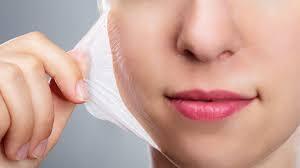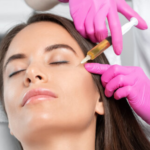
Are you looking to rejuvenate your skin, address specific concerns like acne scars or fine lines, and achieve a refreshed complexion? Chemical peeling might be the answer you’ve been searching for. In this blog, we’ll take a deep dive into the world of chemical peels, exploring their different types, the benefits they offer, and what you can expect during and after the procedure. By the end of this article, you’ll have a better understanding of how chemical peeling can help you reveal radiant, healthier skin.
Understanding Chemical Peeling
Chemical peeling is a cosmetic procedure that involves the application of a chemical solution to the skin, causing it to exfoliate and eventually peel off. The result is the removal of damaged outer layers of skin, revealing smoother, more youthful skin underneath. Chemical peels can vary in strength and formulation, allowing them to address a wide range of skin concerns.
Different Types of Chemical Peels
There are three main types of chemical peels, each designed for specific skin concerns:
- Superficial Peels:
- These are the mildest type of chemical peels and typically use alpha hydroxy acids (AHAs) or beta hydroxy acids (BHAs) to exfoliate the outermost layer of the skin. Superficial peels are excellent for improving skin texture, reducing fine lines, and addressing minor pigment irregularities.
- Medium Peels:
- Medium peels use trichloroacetic acid (TCA) or a combination of TCA and other acids. They penetrate deeper into the skin and are effective for treating moderate wrinkles, age spots, and more significant pigment irregularities.
- Deep Peels:
- Deep peels use phenol or high-concentration TCA and penetrate the deepest layers of the skin. They are the most aggressive type of chemical peel and are typically reserved for severe skin issues, such as deep wrinkles and pronounced pigment irregularities.
Benefits of Chemical Peeling
Chemical peeling offers a multitude of benefits, making it a popular choice for those seeking skin rejuvenation:
- Improved Skin Texture:
- The removal of dead skin cells and stimulation of collagen production result in smoother and softer skin.
- Reduction of Fine Lines and Wrinkles:
- Chemical peels can effectively diminish the appearance of fine lines and wrinkles, particularly with medium and deep peels.
- Fading of Pigment Irregularities:
- Whether you’re dealing with sunspots, age spots, or melasma, chemical peels can help reduce the appearance of pigment irregularities and even out your skin tone.
- Acne Scar Improvement:
- Chemical peels can be an excellent option for reducing the appearance of acne scars and improving overall skin texture.
- Minimized Pore Size:
- Regular chemical peels can help unclog pores, making them appear smaller and reducing the risk of acne breakouts.
What to Expect During and After the Procedure
The experience of a chemical peel can vary depending on the type and strength of the peel. However, there are some general aspects to consider:
- Consultation: Your journey begins with a consultation with a qualified skincare professional. They will assess your skin and recommend the type of chemical peel best suited to your needs.
- The Procedure: During the peel, your skin will be thoroughly cleansed, and the chemical solution will be applied. You may experience a mild tingling or burning sensation, which is usually temporary and can be managed with a fan or cool compress.
- Post-Peel Care: After the procedure, your skin will be more sensitive to the sun. It’s crucial to protect your skin with sunscreen and avoid excessive sun exposure.
- Recovery: Your skin will likely peel for a few days to a week, depending on the type of peel. After the peeling process is complete, you’ll notice a significant improvement in your skin’s texture and appearance.
- Multiple Sessions: For optimal results, multiple chemical peel sessions may be recommended, especially for more severe skin concerns.
Conclusion
Chemical peeling is a versatile and effective treatment option for improving skin texture, reducing fine lines, fading pigment irregularities, and addressing various skin concerns. Whether you opt for a superficial, medium, or deep peel, consulting with a skincare professional is essential to ensure the procedure is tailored to your unique needs. With proper care and follow-up, you can reveal radiant, healthier skin and enjoy the benefits of a refreshed complexion.




